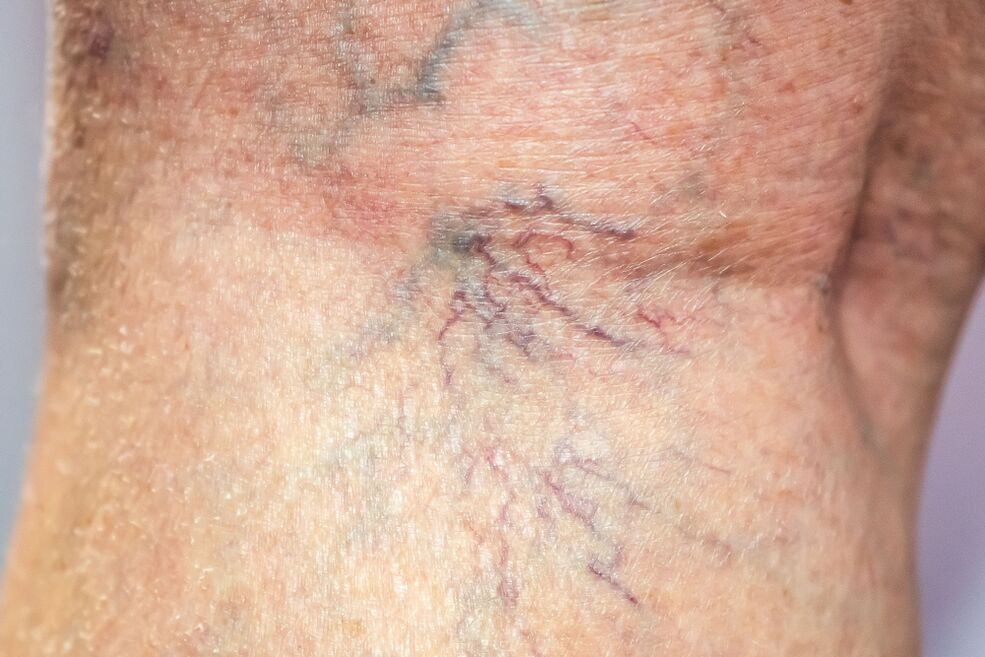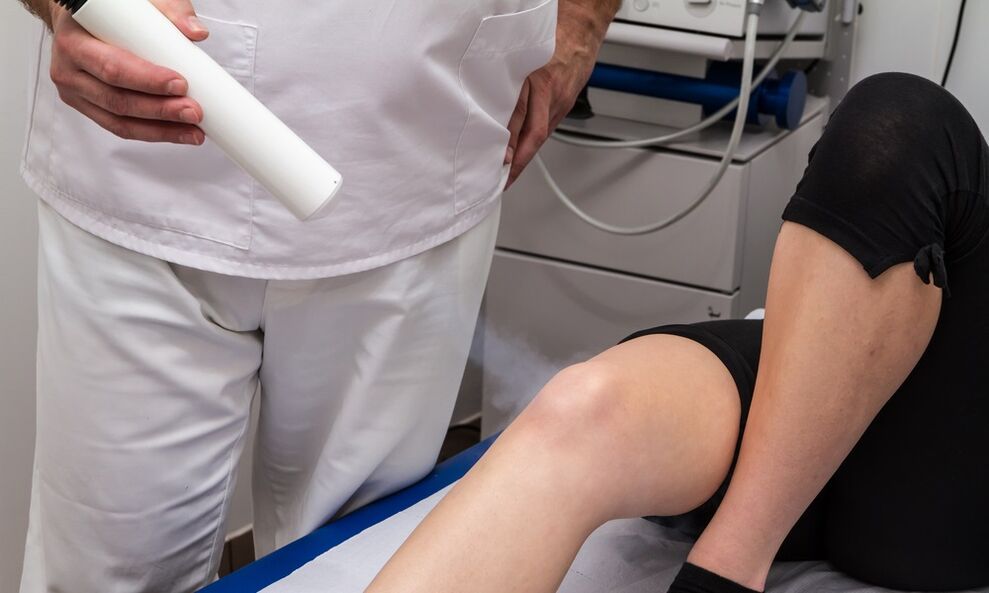Women's susceptibility increases periodically through the extension of the venous wall and softens the valve as the concentration of the hormone progesterone increases.
Reason:
The main factor of varicose veins is the genetic weakness of the blood vessel wall.

In addition, human lifestyle is crucial in pathogenesis:
- Long-term work, standing or sitting;
- Lack of regular physical fatigue;
- Listening weights;
- Receiving estrogen drugs.
The risk of lower limb veins increases with age.But more and more patients are 30 years younger.
Shapes of varicose veins:
In most cases, patients have varicose veins and are worried about severity, outbreaks, calories, itchy skin, leg anxiety and pain, and pulsational pain in the calf muscles.One characteristic of these signs is that they appear after standing for a long time.Often, when walking, lying, resting at night, or walking after using medical compression products, unpleasant feelings are completely transmitted, or their intensity is greatly reduced.
A important sign of the disease is cramps in the calf muscles, which usually occur at night.
The subcutaneous veins expand in the form of convincing blue conglomerates along the lower legs and thighs.Unfortunately, there is a view that vascular stars are manifestations of varicose veins.However, it is worth noting that this is not an absolute sign of the disease, and in many ways it is purely a problem with cosmetics.Such signs can carry varicose veins in the skin, but in most cases it is also found in healthy people.
As the development of varicose veins, the skin invaded the lower leg skin.Initially, excessive staining areas occur, and soon after the subcutaneous tissue and skin are compacted, which obtains a characteristic "paint" appearance.In the center of the skin painted area, responding to the minimal damage, a small white area appears, similar to Starin's subtlety.This is what So calls white skin atrophy, and then opens up nutritional ulcers.
Skin violating the skin is a sign of chronic venous deficiency, which also includes symmetric edema on the legs.

Diagnosis:
Ultrasound (color double-stranded scan; triple scan) - The "gold standard" for diagnosing varicose veins in the lower limbs.Ultrasound experts must be sure to check the blood vessels on both sides of the legs.He evaluates its diameter, compressibility, characteristics of blood flow and values of reflux (reverse blood flow).The work of evaluating the VA valve is not only performed in the patient's position when lying, but also standing.
Vinary reliefs of X-ray and contrast were previously considered the primary method for instrumental diagnosis of varicose veins, but they are still far away in the past.
Treatment of varicose veins in the lower limbs:
The same symptoms may be signs of various diseases, and according to textbooks, this disease may not occur.Don't try to be treated - Consult a doctor
Modern therapies for varicose veins include surgical intervention, sclerotherapy, compression therapy, and the use of various medications.
Surgery
Surgery treatment is the only way to reliably improve quality of life, reduce the risk of complications and the possibility of disease recurrence.It involves removing varicose veins and eliminating pathological reverse currents.There are two interventions:
- Thermal Prison is a minimally invasive (without shear) treatment that consists of internally using laser or radio frequency sensors.
- Traditional surgical intervention involves resection of varicose veins.Currently, the technology for such interventions has been fully developed and allows you to obtain good functional and cosmetic results.
Scrystallization therapy is considered a surgical treatment method respectively.It successfully supplements, in some cases (the initial stage of varicose veins) replacing the surgery.The process is to introduce a special drug into the varicose vein, sticking it from the inside.
Compression treatment of varicose veins
Elastic bandages: Pros and Cons
Compression therapy is a mandatory component of any method of treating varicose veins and is also the most effective way to prevent varicose veins.
For compression treatments, elastic bandages are most commonly used, which are classified into 3 categories according to the degree of stretching:
- Short (bandages do not exceed 70% of the initial size),
- Average (range of increase in the initial stretch length in the range of 70-140%),
- Length (140% and higher) Scalability.
There are necessary categories on the packaging of bandages, which are necessary characteristics for the correct selection of products.
It is recommended to use a long bandage during the recent postoperative period to prevent blood and reliable bandage fixation.To ensure the best treatment compression regimen, the most suitable bandage is the most suitable.
When using elastic bandages, follow the following rules:
- Apply bandages, extending your feet into “self” to prevent wrinkles in the ankle area, which can damage the skin when moving.
- Bending always starts from the joints of the fingers of the foot and then captures the heel.
- The pressure of the bandage should be weakened smoothly from the ankle to the thigh.
- The bandage roll is not wrapped, and it is located near the skin.
- The cylindrical contour of the limb is achieved by placing foam or latex pads.

Most patients with varicose veins should use elastic bandages throughout the day, take off in the morning before waking up in bed and before night breaks.To treat nutritional ulcers, multi-layer compression bandages can be used for a long time, and directly removed with the affected area of the lower leg skin, the bandage is impregnated with drugs (zinc, zinc, zinc oxygen, etc.).Use special adhesive bandages for other fixation of compression bandages.
Despite high efficiency, compression treatment with elastic bandages is obviously unfavorable - resulting in physical and aesthetic inconvenience, and in addition, it is difficult for older people to observe all the rules on their own.
Compression knitted clothing
Special compression knitted clothing makes it very popular.It consists of four compression categories of socks on stockings, lower and upper thighs, and leggings (including special leggings for pregnant women).
This knitted fabric is made of cotton, natural rubber - elastic rubber and synthetic rubber.Natural fibers are optimal for skin sensitivity and impact (varicose veins, dermatitis, nutritional diseases).As for synthetic fibers, their advantages are small quantities of diameters and various colors that allow for medical knitted garments with high aesthetic properties.
Medical treatment of varicose veins
The main goal of drug therapy is to eliminate subjective symptoms of venous insufficiency and prevent and reduce side effects after surgical intervention.
The main preparation for treating varicose veins is drugs with similar characteristics.They should be taken only under the control of the subject physician.According to the study, the safety of using such drugs has been demonstrated only in short-term treatment courses.If used for longer use, it may not appear serious but rather unpleasant side effects, such as gastrointestinal diseases.
Usually, a week after the start of reception, positive motivation will appear: night cramps, pain, severity passing, and reduced swelling.It is believed that the minimum duration of the course should be at least 2 months.In severe varicose veins, taking the medication can last up to six months or more.
Offers and gels
The simplicity of use and the relative inexpensiveness of ointments and gels make them very popular among patients and doctors.A serious disadvantage of uncontrolled use of topical medications is the high frequency of skin complications, whose forms of peeling, dermatitis and eczema are caused by sensitivity caused by long-term use of the same treatment.
Therefore, topical medications (oints, gels, butter) are not recommended as a prevention and without symptoms of chronic venous disease.
.At the beginning of use, skin irritation and peeling can be performed at the location of the medication.
Additional Therapy
In some countries, physical therapy methods are broad.To cope with symptoms of varicose veins in the lower limbs, such as pain and cramps in the calf muscles, you can use the electrical stimulation method of the muscles in the legs.There is no evidence of the effectiveness of treatment of the disease in other physical therapy approaches.

Prevention of varicose veins:
For all patients with varicose veins, rational tissues of labor and rest are necessary.This category of patients is not recommended because of work related to the effects of prolonged stay or sitting posture, weight lifting and high temperatures.At work and at home, they need regular holidays at an angle of 15-20 degrees (and during sleep it is recommended to raise the end of the bed's feet above the heart level), rational nutrition does not include consumption of spicy and salty foods as well as alcohol.Weight should be strictly controlled because obesity can lead to the progression of the disease.
Under elastic compression conditions, mobile exercises (skiing, cycling) can be provided by swimming, for venous outflow of the lower limbs and for muscle training.























